To the land where the Age of Discovery Began
2021/1/15
Lisbon (Portugal)
Lisbon, the capital of Portugal, is located on the banks of the Tagus River in the western part of the Iberian Peninsula. With a history of more than 3000 years, it is known as one of the oldest cities in Western Europe, older than other big cities such as Rome and Paris. It was during the Age of Discovery that the towns that were under the control of ancient Rome and Islam became prosperous. The city of Lisbon, with its many buildings built during this prosperous period, is full of historic sights that one can’t leave out when talking about western history. In this voyage report, we will introduce the charm of a gorgeous city painted with a whole pallete of cultures. We will go out to walk around Lisbon, where you can experience history in the flesh.
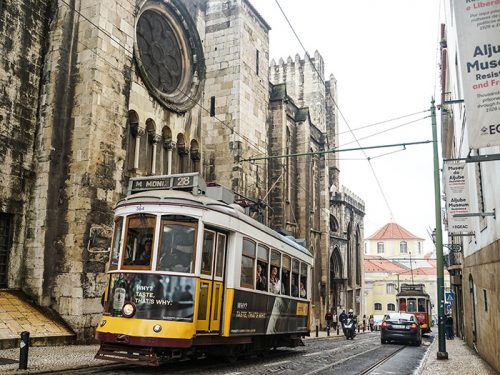
Stroll around the city by tram
Because of its hills surrounded terrain, Lisbon is known as the city of seven hills, and is lined with maze-like intricate alleys. In the city where many buildings of the Age of Discovery remain, the atmosphere of a rich port town remains, inviting you to depart on a great travel. An indispensable means of transportation in such a city is the tram, which is a similar to a train that makes a rattling noise while running through the cobblestone streets and narrow alleys. If you take a tram that runs vertically and horizontally in the city, you can easily move uphill. From the castle of San Jorge, which rises above the city’s hills, you can enjoy a spectacular view of the beautiful old town with its orange roof and white walls, and the Tagus River beyond.

Follow the glory of this maritime nation.
It was from here in Lisbon that Prince Henry the Navigator, who made Portugal’s first overseas expansion, and Vasco da Gama, who pioneered the Indian route, left Europe. On the banks of the Tagus River, there is a 52-meter-high “Monument of Discovery”, where 33 people, including Prince Henry the Navigator, sailors, historians, and missionaries, symbolize the history of Portugal’s voyage. At the foot of the monument is a world map showing the year when Portuguese ships reached various parts of the world during that period. A huge monument built at the starting point of the great voyage will stir up feelings of romanticism.
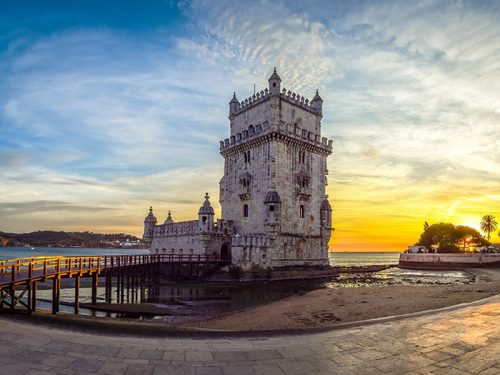
Heading west along the river from the monument of discovery, you will see the Belem Tower, which is the symbol of the city of Lisbon and is called the “Lady of the Tagus River”. Along with the nearby Jeronimos Monastery, it is a UNESCO World Heritage Site due to its historical value. Originally built as a fortress to monitor ships crossing the river and protect the city, it was later used as a lighthouse for customs clearance of ships. Besides its elegant and beautiful appearance, the view from its terrace on the top floor is highly recommended. The tide of the wind blowing from the Tagus River and the surface of the water reflecting the glitter and sunlight are comfortable, providing us a moment that reminds us of the Age of Discovery.

The Jeronimos Monastery, which took about 300 years ot be built from the start of its construction in 1502, is a symbol of hegemony during the Age of Discovery. Decorated in a unique “Manueline style” with motifs related to voyages such as ships, celestial globes, anchors, and marine flora and fauna, it is reminiscent of the glory Portugal experienced as a maritime nation. In addition to the gorgeous palace-like facade, the interior of the cathedral of Santa Maria, attached to the monastery, and the corridor decorated with elaborate carvings are breathtakingly beautiful. Seeing the delicate and magnificent decorations of lace, it is understandable that the monastery is called “the masterpiece of the Manueline style”.
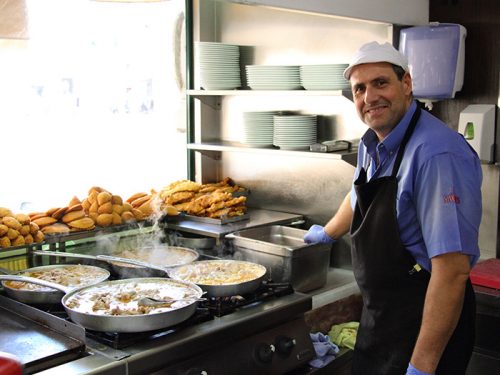
Enjoy authentic gourmet food!
Located near the Atlantic Ocean, Lisbon is also a gastronomic city. One of the most famous dishes is called “Bacalhau”, which uses dried cod. It is said that the different number of recipes for Bacalhau are enough to make different dishes every day for a year, as it can be enjoyed witg various arrangements such as oven-baked soup, gratin, and croquettes. Why has dried cod become a popular ingredient in Portugal, which is surrounded by the sea on three sides and is rich in fresh seafood? It comes from the fact that Bacalhau was preserved food for cruise ships during the Age of Discovery. Due to its deliciousness, it gradually became a favorite dish on land and now is called Portugal’s national dish.
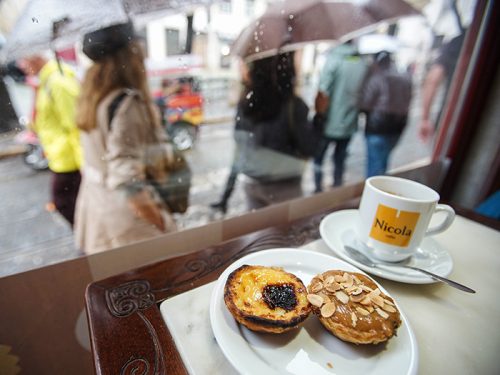
Also, the Portuguese national dessert “Pastel de nata” is recommended for dessert after meals. A bite-sized tart made by stuffing a savory pie crust with plenty of custard cream and baking the surface, it is also said to be the origin of the egg tart. It goes well with coffee and liquor, being addictive whit its simple taste! The desert is said to have been created by monks at the Jeronimos Monastery. In the Belem district, there is a long-established patisserie that keeps the secret recipe that was handed down from the monastery, and it is so popular that you can see people lining up every day.
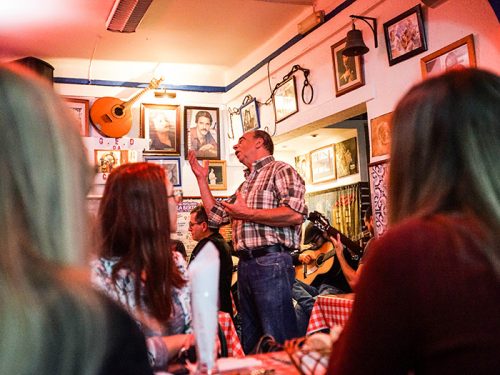
You can’t speak about Lisbon nights without mentioning fado.With its roots in downtown Lisbon, fado is folk music that plays the joys, sorrows, and nostalgia of life. At dinnertime, many restaurants provide fado performances, so you can enjoy the exotic notes of fado while tasting the food. If you listen to the traditional songs that Lisbon children have nurtured, you will become more familiar with the local culture and history. The night in Lisbon will continue as you get drunk with the Portuguese melodies, which are characterized by its rounded shape guitars, and the expressive singing voices that echoes throughout the store.
